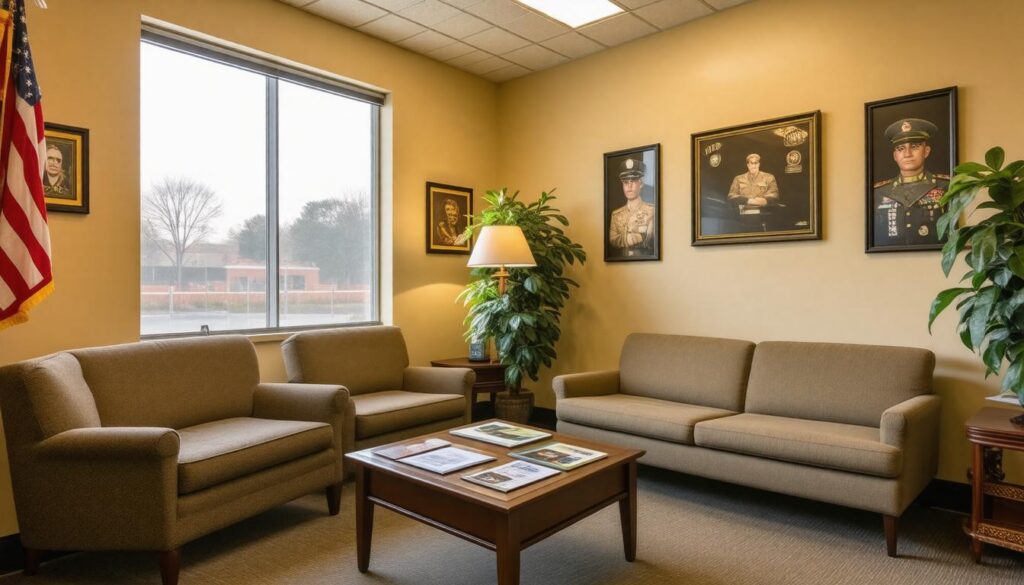Making In-home Care for Seniors Affordable
Making In-Home Care for Seniors Affordable
As families look for ways to care for their aging loved ones, the costs of in-home care can often feel overwhelming. It can be a real challenge balancing the need for quality services with budget constraints. Fortunately, there are practical options and strategies available to make these vital services more affordable without sacrificing care. By exploring financial assistance programs, understanding different types of care, and considering innovative approaches like shared arrangements, families can find solutions that work for them. In this article, we’ll dive into effective ways to navigate the complexities of in-home senior care and help you manage the potential financial impact.
Making in-home care for seniors affordable can involve exploring various financial assistance options such as state programs, non-profit organizations like the Senior Care Foundation, and utilizing tax deductions for medical expenses. Additionally, families can consider shared caregiver arrangements or hiring private caregivers through reputable agencies that offer competitive rates to manage costs effectively.

Analyzing In-home Care Options
When it comes to analyzing in-home care options, it's vital to take a detailed look at the different types of services available, as each can significantly impact the quality of life for seniors. Understanding these options allows families to tailor care to meet the specific needs of their loved ones effectively.
For instance, during my conversations with families in similar situations, I've learned that many don’t fully grasp the breadth of choices available to them. This knowledge gap can lead to decisions that are not in the best interest of the senior.
Types of In-home Care
In-home care can vary widely in terms of what services are offered. At one end of the spectrum, you have companion care. This type focuses primarily on providing social interaction and assistance with daily activities such as meal preparation, light housekeeping, and even transportation to appointments. It's quite common for family members to overlook this option, assuming that more intensive care is necessary when often a friendly face and a helping hand can make all the difference.
In contrast, we have skilled nursing care, which brings licensed professionals into the home to handle more complex medical needs like medication management and treatment administration. It's critical to note that some seniors may need a blend of both types; perhaps they require companionship during the day while also needing medical attention in the evening. By truly considering these distinctions, families can better align the type of care with their loved one's requirements—something I’ve seen greatly enhance both health outcomes and emotional well-being.
As you navigate these choices, it's important to think about costs and benefits.
Comparative Analysis
To aid in making informed decisions, families should compare both costs and potential benefits associated with each type of care available through resources like Senior Care Foundation. These comparisons help ensure that you choose the most cost-effective yet suitable care for your loved one.
| Type Of Care | Description | Average Cost (Per Hour) |
|---|---|---|
| Companion Care | Provides social interaction and assistance with daily living activities | $15-$20 |
| Home Health Aide | Offers basic health monitoring along with daily assistance | $20-$25 |
| Skilled Nursing | Delivers medical treatments and medication administration | $35-$50 |
Each of these options has its place depending on individual circumstances and finances. While companion care may be more affordable, it’s essential to weigh that against whether it meets all the senior's needs effectively.
With an understanding of different types of in-home care and their respective costs, you are now ready to explore strategies that optimize financial planning while maintaining excellent care for seniors.
Effective Budgeting Strategies
Budgeting for in-home care should feel less like a daunting mountain and more like a clear pathway to ensuring your loved one receives the necessary support without breaking the bank. By taking a thoughtful approach, you can create a realistic financial plan that considers all necessary aspects. Start by assessing your financial resources. Evaluating what’s available—be it pensions, savings accounts, or investments—gives you a solid foundation to work from. Knowing exactly what funds you can access allows you to create a sustainable budget tailored to your situation.
Taking stock of your financial resources is just the beginning; the next step is calculating expected costs.
After taking an inventory of your assets, estimate the monthly and annual costs associated with the in-home care services you're considering. Don't forget to include potential additional expenses such as medical supplies or therapy equipment, which often creep up when planning for care. By scrutinizing these costs, you’ll get a clearer view of your potential outlay and will help avoid unpleasant surprises later on.
With the anticipated costs laid out, it’s essential now to prioritize needs among those identified services.
Distinguishing between essential and non-essential care needs plays a pivotal role in your budgeting strategy. For instance, while companionship may be vital for emotional health, not every home care plan requires intensive medical oversight. By prioritizing what's truly necessary, you give yourself some breathing room to allocate funds more efficiently without feeling too constrained. This principle can be crucial in ensuring that your loved one receives the care they truly deserve rather than overstretching finances on less critical services.
Now that you’ve assessed resources and prioritized needs, it’s time to develop an actionable budget plan.
Building a detailed budget involves more than just listing out expenses—it requires alignment with the financial resources at hand. Break down each expense category and outline how much you intend to spend monthly or annually on both essential services and additional care needs. A well-structured budget not only fosters better financial management but also instills peace of mind for families navigating through this period of transition. Keep an eye on all expenditures and adjust accordingly; flexibility within your budget can empower you to adapt as changes arise in needs or resources.
Additionally, modern tools can ease this budgeting process considerably.
Use of Budgeting Tools
Explore various online budgeting tools and calculators available at Senior Care Foundation designed specifically for families seeking in-home care solutions. These platforms not only provide templates but also offer valuable insights into best practices for managing senior care finances effectively. By streamlining your budgeting efforts through dedicated tools, you'll be able to focus more on what matters most: providing quality care while remaining financially sound.
As we continue this journey toward affordability in senior care, understanding various avenues through insurance and government programs can unlock additional support options for families needing assistance.
Leveraging Insurance and Government Programs

Navigating the world of insurance and government assistance for senior care might feel overwhelming, but understanding your options can genuinely ease the financial strain. Let’s break down some pivotal aspects that could make a significant difference in your budgeting efforts.
Types of Insurance
First and foremost, long-term care insurance is designed explicitly for such services. This type of policy helps cover costs associated with extended personal care and health services received in one’s home. It’s crucial to note, however, that these policies often come with stringent eligibility requirements. Not every senior may be qualified to receive benefits under such plans.
As of 2025, the encouraging statistic is that most long-term care insurance plans cover around 70-80% of in-home care expenses. That could mean the difference between an unmanageable cost and an affordable solution, making it well worth checking if you or your loved one qualifies.
Government Programs
In addition to insurance options, government programs play a vital role in supporting seniors who require in-home care but have budget constraints. For instance, Medicare may provide coverage for specific health services delivered at home, provided certain conditions are met. Yet, it's essential to understand that Medicare's scope is somewhat limited when it comes to long-term caregiving needs.
On the other hand, Medicaid can be a game-changer for many low-income seniors because it offers broader coverage. Depending on your state, you could access various support services through Medicaid's Home and Community-Based Services (HCBS) waivers.
These waivers facilitate payment for not just critical healthcare needs but also help with daily activities like bathing, dressing, and meal preparation through personal care assistance and homemaker services. The statistics from 2024 reflect that approximately 3.6 million seniors benefited from such programs within the framework of Medicaid waivers—illustrating how valuable this resource can be.
Equipped with knowledge about insurance and government support, individuals can more effectively navigate the complexities of senior care funding. Moving forward, it’s crucial to consider how to ensure that care providers meet the utmost standards of quality and compassion.
Selecting Quality Care Providers
When searching for home care services, it’s essential to evaluate the quality of potential caregivers carefully. After all, they will play a significant role in your loved one's daily life. You want someone who is not only qualified but also compassionate and understanding. But how do you sift through numerous options to find the right match? Firstly, you should look at credentials.
Credentials to Look For
Credentials serve as the foundational proof of a caregiver's qualifications. Start your search by verifying their certifications through reputable agencies such as the Better Business Bureau or State Health Departments. While browsing through candidates, keep an eye out for Registered Nurses (RNs) or Licensed Practical Nurses (LPNs). These designations indicate a level of expertise, ensuring that your caregiver has completed the required training and adheres to industry standards.
Credentials are just one part of the puzzle; understanding their background is equally critical.
Performing Background Checks
Conducting thorough background checks can provide an added layer of security and peace of mind. This process shouldn't be skipped; it includes not just criminal history reviews but also contacting references. A senior named John from Illinois found comfort knowing he had run detailed background checks on his potential caregivers. This effort helped him feel secure about letting someone into his home, building trust before any caregiving began. You can use various online services to facilitate this process effortlessly.
As you navigate your options, consider whether to go with an agency or an independent caregiver.
Comparing Agencies vs. Independent Caregivers
This choice often comes down to balancing costs and convenience. Agencies typically offer screened and trained caregivers, which provides reassurance but can come at a higher price tag. On the other hand, independent caregivers may be more flexible financially, but finding the right fit requires more diligence in both recruitment and management. Use this opportunity to weigh what matters most for your situation: safety and reliability versus budgetary constraints.
Navigating these selections requires patience. With careful consideration, reaching out for interviews, and checking references can guide you toward securing quality care needed for your loved one.
Engaging with the right resources will further enhance your ability to find helpful options tailored to meet financial needs.
Financial Assistance and Savings Resources
Understanding how to navigate the financial landscape can be vital in making in-home care not just a wish, but a feasible reality. One key avenue is exploring available financial aid. Many national programs provide substantial assistance to seniors in need.
For instance, the Department of Aging offers several programs specifically designed to support those facing challenges in accessing care services. If you or your loved one is a veteran, you may qualify for additional benefits through the Veterans Administration. A notable example is the VA Aid and Attendance benefit, which assists veterans who require help with daily living activities by providing financial support for in-home care.
Seeking out these options not only offers financial relief but also opens doors to practical care solutions tailored to individual needs.
In addition to these national programs, utilizing local resources can further alleviate financial pressures. Community-based programs and nonprofits often step up to bridge gaps where government aid may fall short. Organizations such as the Senior Care Foundation provide critical services aimed at offering affordable options for seniors, like Gladys, who found much-needed assistance in her search for quality care. When seeking aid, it's worthwhile to check local senior centers or community health organizations that may offer programs designed to assist those financially strapped for help.
For a comprehensive list of resources, don't forget to visit Senior Care Foundation, where they detail material specific to your area that could be life-changing for you or someone close to you.
Apart from formal assistance programs, there are several tips and tricks you can employ to cut costs on in-home care while preserving quality service. Often, simply asking about sliding scale fees or discounted rates based on income can yield surprising results with care providers. Furthermore, neighbors and community members can sometimes band together to share caregivers or establish cooperative caregiving arrangements that lower costs while fostering a supportive environment for everyone involved.
As we continue to explore intentional approaches to managing finances surrounding in-home care, it becomes clear that every little bit helps when it comes to ensuring quality support remains accessible for our beloved seniors.
Practical Tips for Cost Reduction

One of the most effective ways to reduce costs for in-home care is to leverage family and community support. Family members often want to help but may not know how. By openly communicating with relatives, you can create a plan where family members volunteer their time for non-medical tasks such as meal preparation or assistance with errands.
This not only alleviates the need for paid caregivers but also fosters closeness and connection among family members. Consider setting a weekly schedule; for example, one family member can handle grocery shopping on Mondays, while another prepares meals on Wednesdays.
Yet, while family involvement is valuable, it's essential to have a practical approach that considers professional care needs.
Another impactful strategy involves negotiating with providers. Many caregivers recognize that flexibility in scheduling or committing to longer-term arrangements can warrant discounts. Don't hesitate to have an open conversation about your financial limitations. For instance, if you can commit to a caregiver for several months instead of just one or two weeks at a time, providers may offer reduced rates.
Explore different options together and be clear about both parties’ expectations. It’s worth asking if they have sliding scale fees or payment plans that could make services more accessible.
As we contemplate different ways to think about funding in-home care, shared arrangements present a unique opportunity.
Shared care arrangements are highly beneficial for seniors living near each other. Imagine two friends, Alice and Betty, who live in neighboring residences but face similar health challenges. By splitting the time of a single caregiver—perhaps devoting hours to one another's homes—they not only save money but also enjoy increased social interaction.
Such arrangements can limit expenses while creating companionship, which is equally important for emotional well-being. Even within tight-knit community networks or assisted living complexes, these cooperative models can lead to significant savings.
And remember, adopting these practices can significantly ease the financial burden of in-home care as it allows families to utilize their resources more effectively while ensuring their loved ones receive adequate support. For tailored advice and insights into affordable care options, visit Senior Care Foundation, where you’ll find countless resources designed to help you navigate this journey efficiently.
In conclusion, by combining familial support with professional negotiation tactics and innovative shared care approaches, you can create a sustainable in-home care solution that meets your loved ones' needs without overwhelming your finances.


